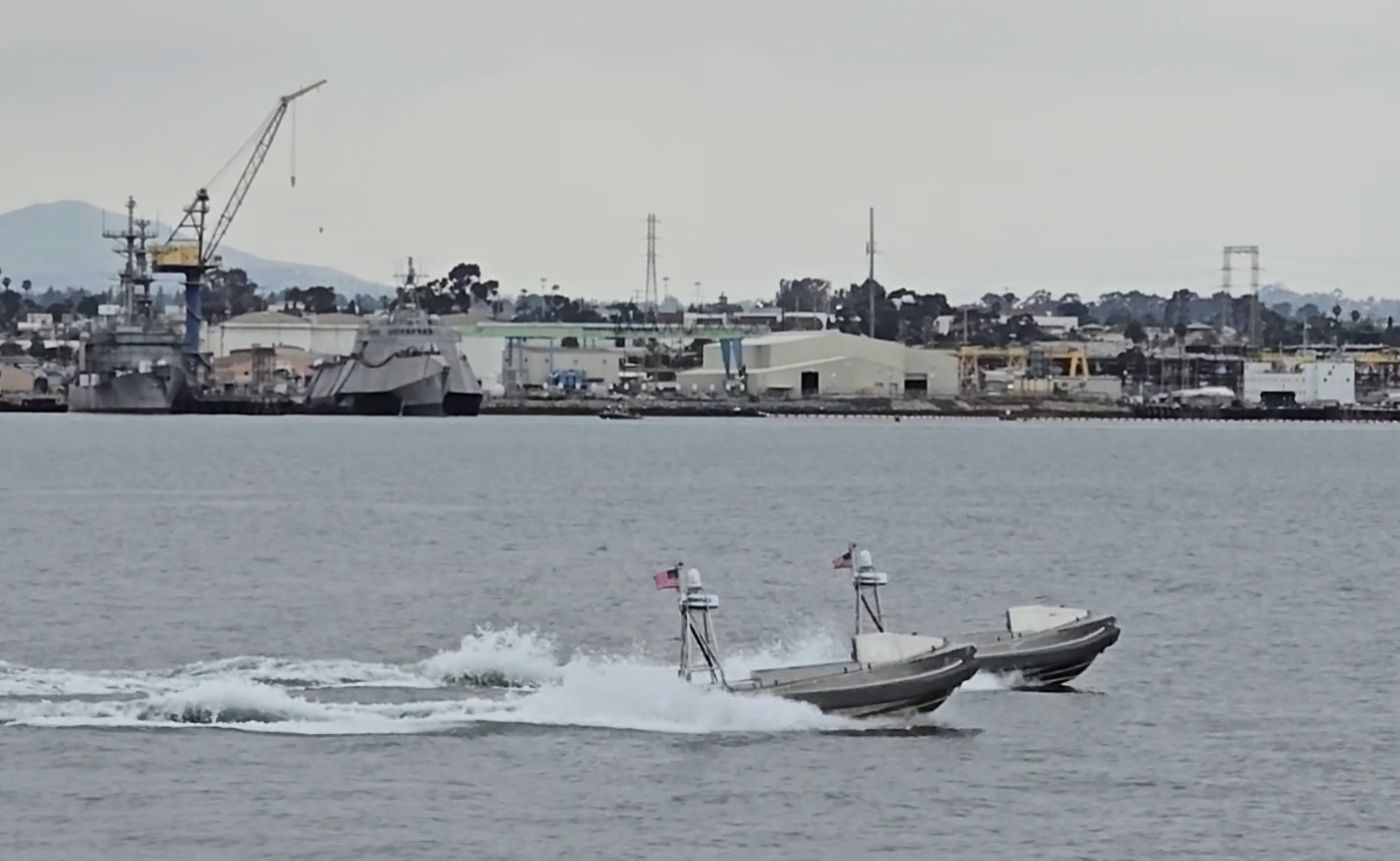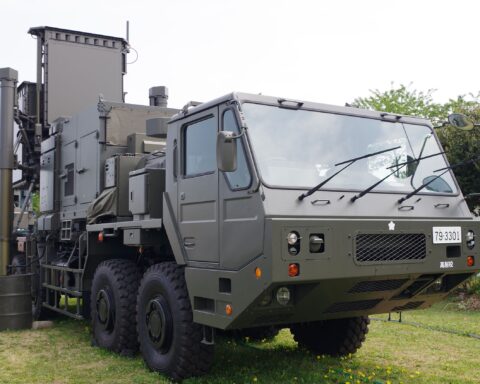
A new report from the Center for New American Security calls for push for a low-cost drones that would provide an autonomous, lethal shield against an amphibious invasion of Taiwan by the Chinese People’s Liberation Army Navy.<!–more–
“Given their extremely low cost, Taiwan should build large numbers of these simple systems and invest in technologies that could provide autonomous terminal guidance for contested environments,” reads the report.
Stacie Pettyjohn, one of the authors of CNAS’ report “Swarms Over the Strait,” said the drones would give the island “a layered defense of uncrewed systems and precision strike.” In addition to eliminating the time-distance problem of reinforcing Taiwan, these systems would overcome the difficulties the United States has hitting moving targets with long-range cruise missiles.
The report itself calls for U.S. investment in “autonomous kamikaze drones” as the most effective way of attacking ships.
The Army successfully fired two Precision Strike Missiles [PrSM] at a moving target during the recent combined joint fire Valiant Shield SINKEX 24 exercise, Bob Work, a former deputy secretary of defense, pointed out on Thursday.
Thousands of prepositioned air, sea and ground drones operating in tandem on Taiwan could turn the 100 nautical miles separating the self-governing island from the Chinese mainland into a “hellscape” if Beijing attempted an invasion, Work said.
Speaking at a Center for New American Security event, he echoed Adm. Sam Paparo’s, the senior U.S. officer in the Indo-Pacific, comments in an interview with a Washington Post columnist that Taiwan’s defense rests on having unmanned autonomous systems in place. That positioning “eliminates the tyranny of distance” challenge to operations there.
Using uncrewed underwater vessels as an example, Work said “these fast mines or slow torpedoes” could be used to take out Chinese merchant shipping or combatants in port or in the strait if an invasion began. “All end in a big boom when you kill ships.”
He added, “getting their people ashore will be a real problem” when air and ground unmanned systems are in play attacking transport aircraft on their way to Taiwan and landing craft nearing shore and on the beach.
Work was formerly the chair of the U.S. Naval Institute board of directors.
He said last August’s announcement of the Pentagon’s Replicator initiative to field hundreds of thousands of drones quickly has had a deterrent effect. The “reveal,” as he called it, forced People’s Liberation Army military planners to rethink how they could operate against Taiwan and carry out long-range ambitions in the South China Sea.
But, “Adm. Paparo wants to have an advantage” in concealing how these systems would operate together in combat, Work added.
The impact of even smaller drones with limited range and endurance in combat than seen in initial Replicator investments are seen routinely in Ukraine, the panelists agreed.
Andrew Metrick, a fellow at CNAS, said Kyiv’s maritime drones have “rendered Russia’s Black Sea Fleet ineffective.” Other systems have affected supporting forces in the field, as well as providing intelligence, reconnaissance and surveillance to Ukraine. Drones “can open up the battlespace.” The report notes they provide an opportunity to develop operating concepts and doctrine.
Work mentioned Russian advances in electronic warfare as an example of learning from combat experience. He added that in the long term, the United States needs to see EW as a means to “wipe out swaths of unmanned systems” and invest in it. He said cyber also has a major role in countering these systems. There is also the kinetic aspect: “Can we put a 100 drone swarm vs this 50 drone swarm?” On the kinetic investments, he added, “you better be on the right side of cost.”
As happened with the Pentagon’s “Third Offset” initiative to achieve dominance in one technology – autonomous systems, Work said, “I don’t know if we have enough money to support [Replicator].” Third Offset fell victim to sequestration, which capped domestic and defense spending in the Budget Control Act of 2011.
A major recommendation called for in the CNAS report was:
“The DoD and Congress, in partnership with U.S. industry, need to build both the commercial and military drone industrial base to scale production and create surge capacity. Although drones have proved not to be survivable, the United States can achieve some resiliency in its drone fleet by developing the capacity to rapidly reconstitute platforms lost in a conflict. This will require a more robust drone industrial base.”
Recognizing these systems can’t do everything, such as striking targets deep inside China, is important, she said. Long-range manned bombers still meet that requirement.
To Work, “autonomous” in 21st-century warfare means “a human must make the decision to take a human life” but not every action of a system.





